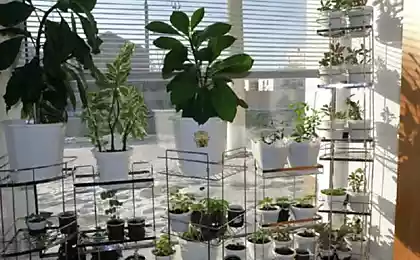638
Indoor plants clean the air really

It is known that plants absorb gases through the pores on the leaf surface. This property promotes photosynthesis - the process by which plants convert light energy and carbon dioxide into chemical energy for growth.
Researchers studying the ability of a houseplant to air purification and found that a plant in addition to carbon dioxide can absorb other gases, including many volatile organic compounds, for example benzene, contained in some types of plastics, textiles, pesticides and cigarette smoke, and formaldehyde contained in cosmetics, washing dishes, washing clothes and cleaning carpets.
Volatile organic compounds and other contaminants indoor air (e.g., ozone) can cause many diseases, including, they may promote the occurrence of nausea and asthma, as well as cancer, and diseases of the airways.

The ability of plants to absorb these indoor pollutants from the air is an example of phytoremediation to allow use of any plants (indoors or out) to reduce the pollution of air, water or soil.
Indoor plants clean the air by absorbing harmful gases through their leaves and roots. Microorganisms living in the soil in the pots of plants, also plays an important role in the neutralization of volatile organic compounds and other pollutants.
While most plant leaves can help clean the air in the rooms, some of them are most effective: Japanese royal fern, pauchnik, Boston fern, English ivy, areca palm, Epipremnum Aureum, aloe vera and spatifillyum.
via factroom.ru
The "kingdom of fungi" Mother found mushrooms - giant weighing 15 kg
4 interesting historical facts about cosmetics





















